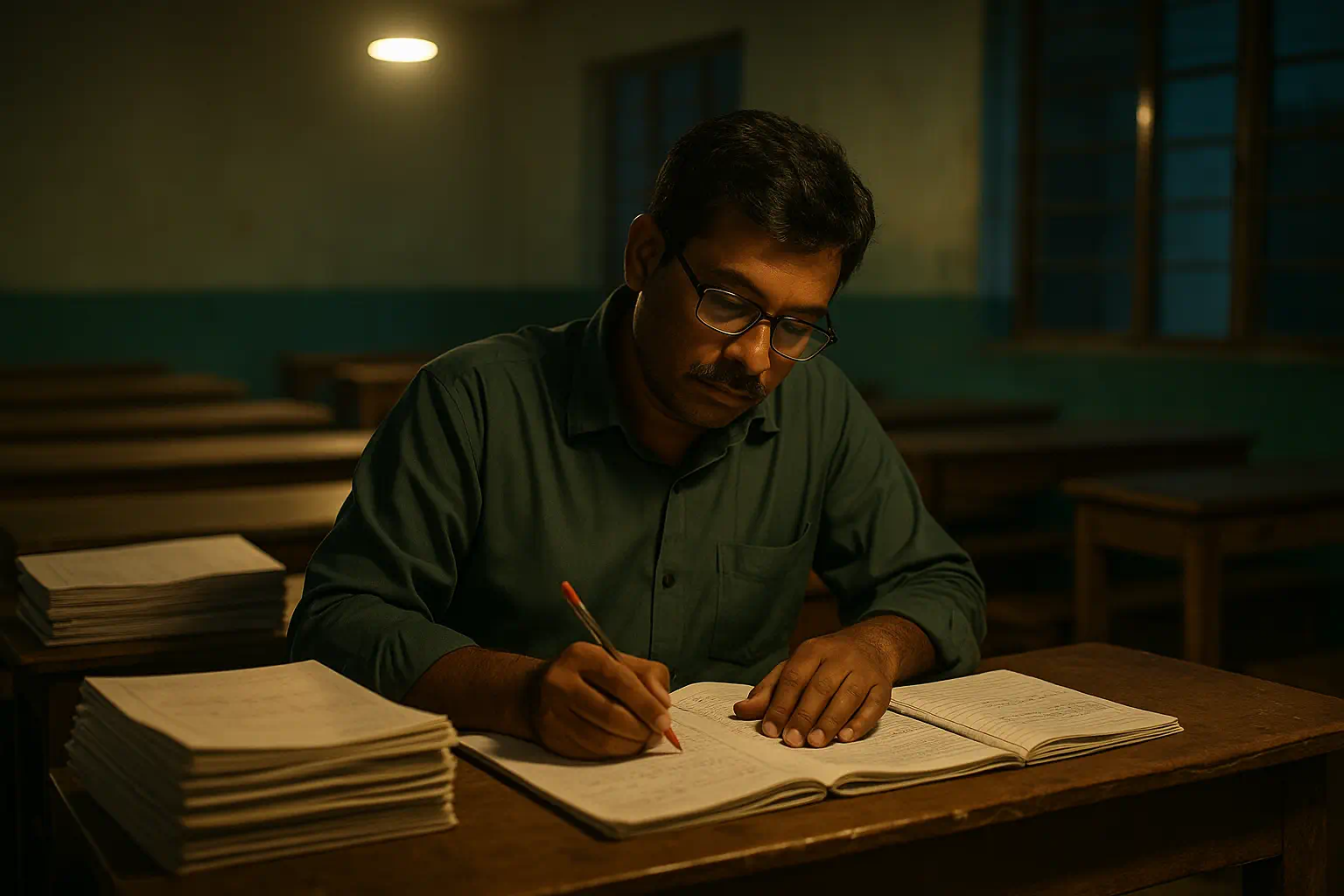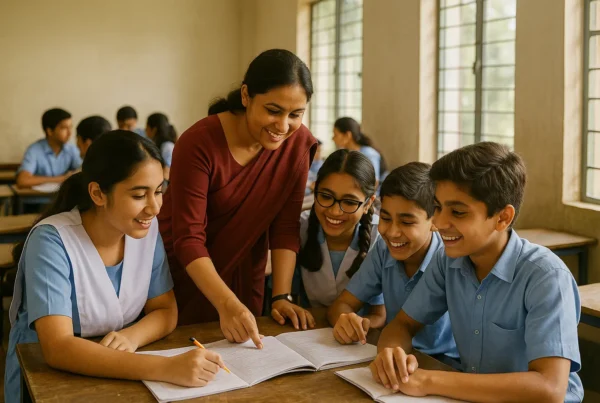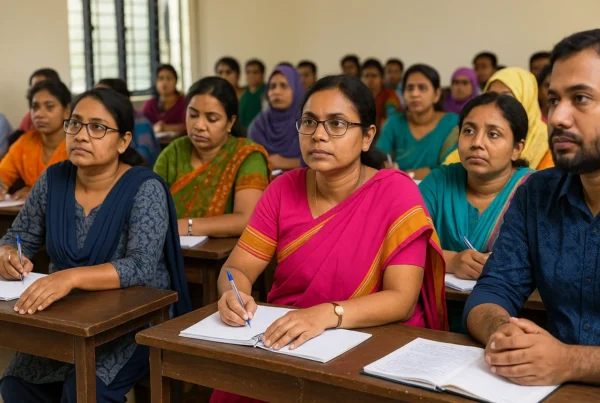The Hidden Cost of Teaching: Why Work–Life Balance Is Breaking Down in Bangladesh’s Schools
Primary & Secondary | Bangladesh (2022–2025)
You can see it in every staffroom. Teachers hunched over piles of exercise books. Coffee gone cold. The bell rings for home — but they stay. For many teachers in Bangladesh, the work doesn’t end when the school day does. It stretches into the evening: marking, lesson planning, filling out reports. The toll is real — on teachers’ lives, and on the system’s ability to recruit and retain the people who make learning possible.
A system running on overtime
Across Bangladesh, both primary and secondary teachers work under sustained pressure. Large classes, limited staffing and administrative demands mean the day rarely ends at the final bell.
Evidence over the past three years shows that secondary teachers commonly take six to seven classes a day (around 40–45 minutes each), often with 40–50 students per class. National averages put pupil–teacher ratios at roughly 37:1 in primary and 45:1 in secondary — well above UNESCO’s recommended levels for primary schooling. Managing oversized classes amplifies the time needed for planning, marking and feedback.
A diagnostic study of primary education management reported that teachers shoulder around “73 kinds of various academic and non-academic tasks”, from instruction, marking and lesson planning to data entry, attendance reporting and event supervision. Globally, OECD analyses suggest about half of a teacher’s working time goes to non-teaching tasks; Bangladesh appears to meet or exceed that share given current workloads.
When teaching takes over life
Teachers frequently report that work spills far beyond official hours, eroding personal and family time. Accounts from 2025 highlight fatigue, anxiety and burnout, with many teachers noting they “do not get adequate time to recharge” as responsibilities extend into evenings and weekends.
Marking and preparation are only part of the picture. Mandatory meetings, form-filling, and co-curricular supervision further compress time. The net effect is less bandwidth for personalised feedback, experimentation with pedagogy, or professional learning — all of which underpin better student outcomes.
Recruitment and retention under strain
Workload is not merely a well-being issue; it is a workforce issue. Reports from 2024–2025 indicate that a growing number of teachers are leaving the profession or considering alternative careers, citing long hours, modest pay and limited progression. Internationally, UNESCO’s teacher reports warn that heavy workloads and low pay are pushing many young teachers to exit within their first years — a pattern visible across South Asia.
This creates a vicious cycle: vacancies increase class loads for those who remain, which in turn accelerates burnout and makes recruitment harder, especially outside major urban centres.
What the evidence implies
Improving teacher well-being and stabilising the workforce requires structural steps: more teachers to reduce class loads, streamlined administrative processes, protected planning and marking time, and clearer professional development pathways. These are not ancillary benefits; they are central levers for system quality. A teacher who spends every night grading is a teacher with less time to reflect, collaborate and rest — and students ultimately bear the cost.
In short
Supporting teachers is not charity. It is an investment in Bangladesh’s educational future — one that pays back in retention, recruitment and, most importantly, learning.
References
- Transparency International Bangladesh. Administration and Management of Primary Education: Problems and the Way Out (Executive Summary).
- The Business Standard (2021). “Teacher shortage makes education recovery a stiff job.”
- The Daily Star (2025). “Addressing the mental health crisis of our school teachers.”
- OECD (2015). Education Indicators in Focus No. 29: “How Much Time Do Teachers Spend on Teaching and Non-teaching Activities?”
- Bonik Barta (2025). “Both education and teacher quality declining in Bangladesh.”
- Razin, A. (2025). “A Third-Class Life for First-Class Minds: The Truth About Teachers in Bangladesh.”
- UNESCO (2023). Global teacher policy and workforce resources (incl. Global Report on Teachers).
- EdSurge (2025). “The world’s classrooms are short 44 million teachers.”
Notes: National pupil–teacher ratios and typical daily class loads are drawn from the sources above and sector reporting 2022–2025. Where international benchmarks are cited, see UNESCO and OECD references.
Stay updated. If you found this useful, join the EBTD newsletter for monthly, research-backed tips, free classroom tools, and updates on our training in Bangladesh—no spam, just what helps. Sign up to the newsletter and please share this blog with colleagues or on your social channels so more teachers can benefit. Together we can improve outcomes and change lives.





